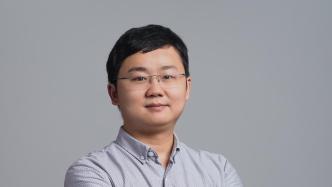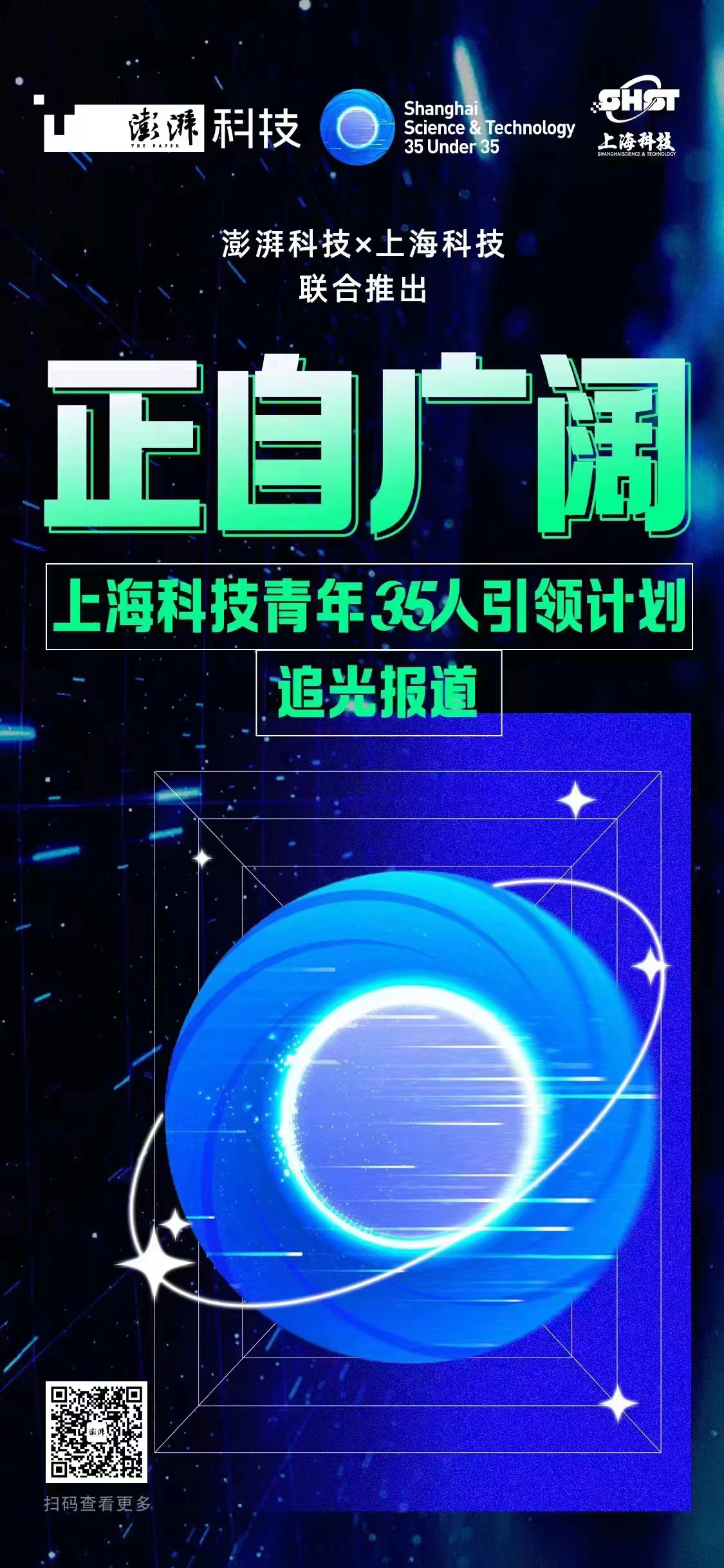
"Doing basic research is like writing code. You have to keep writing, find some loopholes, and then fix them."
"To do scientific research, firstly, you must have good talent, secondly, you must have luck, and thirdly, you must be able to persist for a long time. The three conditions are indispensable."

Yin Xinmao, Professor of Shanghai Key Laboratory of High-Temperature Superconductivity, Deputy Director of Department of Physics, Shanghai University, Director of Institute of Superconductivity and Condensed Matter Physics
In 2004, British physicists Andre Geim and Konstantin Novoselov discovered that graphene can be obtained by repeatedly tearing off graphite with ordinary adhesive tape, and won the 2010 Nobel Prize in Physics for this . Graphene is only one carbon atom thick (about 0.34 nanometers), so it is also called a two-dimensional quantum material. Its discovery has allowed some quantum effects that existed only in theory to be verified experimentally, and it has also given electronic devices such as batteries and CPU chips a great potential to improve electrical conductivity and reduce size. Now, it is still far away from the real "graphene battery" application. Through the basic research of physics, in-depth understanding and mastering the performance of graphene materials is still an unavoidable link in the formal application of graphene materials to the industry.
Yin Xinmao is engaged in the basic research of this ring of quantum materials. Yin Xinmao is a professor, doctoral supervisor, and national young talent of Shanghai Key Laboratory of High-Temperature Superconductivity. He is currently the deputy director of the Department of Physics of Shanghai University and the director of the Institute of Superconductivity and Condensed Matter Physics. Band spectroscopy research tools. Compared with other detection methods (such as electrons), the spectroscopy research method does not destroy the detection substance, and does not require extreme measurement conditions. The detection cost is not high and the operation is convenient. Therefore, it has unique advantages and can better study graphene The performance and mechanism of new quantum materials. In August 2022, Yin Xinmao was selected into the "Shanghai Science and Technology Youth 35 People Leading Program" for this technological breakthrough. Recently, Yin Xinmao had a conversation with The Paper, introducing his research history of applying spectroscopy methods to two-dimensional quantum materials.
First use of special spectroscopy method for 2D materials
Since 2010, Yin Xinmao has been studying for a Ph.D. in the Department of Physics of the National University of Singapore. During this period, he participated in the work of the Singapore Synchrotron Radiation Light Source National Laboratory, and his research has been around spectroscopy. Since 2015, Xinmao Yin has followed Fan Dianyuan, an expert in laser and optoelectronics and an academician of the Chinese Academy of Engineering, for two years of postdoctoral research, applying spectroscopy to the research of two-dimensional materials, and expanding the application and wave band of two-dimensional materials. This opened a new door for Yin Xinmao's research. After 2017, Yin Xinmao began to conduct in-depth research and exploration on the spectroscopy of two-dimensional quantum materials. Two-dimensional materials are only atomically thick, and spectroscopic testing of them is a process of continuous exploration. Over the years, Yin Xinmao has been exploring how to use broadband spectroscopy to measure two-dimensional materials and improve the reflectivity of two-dimensional materials, so that this characteristic broadband spectroscopy can be better applied to the measurement of these materials.
Each optical instrument can only observe one band of light, and different optical instruments measure different bands. Yin Xinmao's originality lies in the superposition and combination of different optical bands observed by multiple instruments through physical modeling and a series of mathematical equations to construct a larger range of light wave energy. Since the important characteristic of quantum materials such as graphene and superconducting materials is that the interaction between electrons is very strong, and different quantum states may only be observed in different energy bands. By expanding the energy range of observations, more quantum states can be observed, and the interaction between them can be studied, so as to better understand some physical mechanisms of quantum materials.
The key to the study of spectroscopy is how to connect each segment of light waves. Yin Xinmao made an analogy, "Just like I want to draw a person, one instrument can only draw hands, and the other instrument can only draw the head. If only the results of these two instruments are put together, it will not be possible to draw a picture. A person, because you may put your hand on your head.” Yin Xinmao explained, “You must first know what a person looks like, see through the essence of the detection results of different instruments, and then model them, so as to put them into a complete people.” Yin Xinmao then explained that assuming there are five or six sections of light waves that need to be connected, one must first find the connection method of the first section and the second section, and then find the connection method of the second section and the third section. At this time, if two and three are adjusted, one and two should be adjusted accordingly, otherwise they will be disconnected. This process of finding a docking method requires long-term continuous debugging and persistence. "The characteristic of basic research is that you will not see the results immediately. , will not immediately see a huge improvement within 10 years like engineering technology, and research requires continuous investment.”
"When I was a Ph.D. student, I didn't publish a single article for 4 years, because I have been doing modeling, and there has been no result. It is equivalent to creating something from 0 to 1, and there is no boundary. Doing basic research is Like writing code, you have to keep writing, find some loopholes, and then fix them.” Yin Xinmao said. But after the spectroscopic method proved to be successful, Yin Xinmao's scientific research path opened up instantly. In the past 5 years alone, he has published more than 60 breakthrough papers, "because this method is unique, others need to come to you to cooperate."
External export technology to assist scientific research and testing
Since Yin Xinmao returned to China and joined Shanghai University in 2021, he has published more than 20 high-level papers using his own spectral technology. And as the first/corresponding author, he published 6 high-level papers in international top journals such as Science Advances, Nature Communications and other international top journals, and many research results have been selected as cover articles by magazines many times.
Yin Xinmao's spectroscopy research is still going on, because it is a never-ending process to connect different wavebands of light, and more wavebands can be added. With the continuous addition of wave bands, more and more details will be captured in the scientific research process. "In the beginning, it was just the outline of a person. As long as I know where the hands are and where the head is, I can conduct research, but if I want to It is very detailed, and I can continue to add details, such as human texture, hair, etc., to make it more and more clear, so that this person will be more vivid." Yin Xinmao said.
Now in the Department of Physics of Shanghai University, Yin Xinmao has built three kinds of spectroscopic ellipsometers with different energy ranges, combined with synchrotron radiation spectrum measurement, which can meet the measurement needs of various quantum materials. In the Shanghai Key Laboratory of High-Temperature Superconductivity, in order to help the industrialization and application of high-temperature superconductor materials, Yin Xinmao also used his own spectroscopy research technology to conduct a series of research on new materials, as well as the development of high-temperature superconductor materials. Simulation software simulates calculations.
Yin Xinmao introduced to The Paper that now his own spectroscopy research methods have initially begun to export capabilities to other scientific research institutes around the world to assist in scientific research and testing. He hopes that this method can be applied more widely in the future, and explore the mode of integration of industry, education and research.
When it comes to future scientific research, Yin Xinmao knows that the results of basic research will not be reflected in application scenarios in a short period of time, so he will not set too long-term goals for himself. Regarding recent ideas, Yin Xinmao said that he hopes to improve his spectrum and apply it to the latest material research, such as the multi-layer corner graphene structure and the corresponding superconductivity created by Cao Yuan, a young physicist born in 1995. sex.
Long-term persistence is an important condition
Yin Xinmao participated in the National Physics Competition in junior high school because of his interest and won the second prize. In high school, he won the first prize in the National Olympic Physics Competition, and was recommended to Zhu Kezhen College of Zhejiang University. After entering university, he chose physics without hesitation and never changed it.
"I was relatively simple before, and I didn't think about whether I could make money in the future. After I continued to study, I found physics more and more interesting, and my talent was also brought into play." Yin Xinmao said.
Talking about the road of scientific research, Yin Xinmao said that along the way, there are many best and smart people around him, but in the end, there are not many people left to do scientific research. bench. Over the years, most of the friends around Yin Xinmao have given up scientific research one after another. On the one hand, Yin Xinmao feels a pity for this, and on the other hand, he also feels that doing scientific research "First, you must have good talent, second, you must have luck, and third, you must be able to persist for a long time. .Three conditions are indispensable.”
In addition, he believes that the stable life has also given him great support, "I was lucky to choose to get married at the end of my Ph.D. With the support of my family, I feel that studying physics can make me more happy. Then a breakthrough was made." In Yin Xinmao's view, "staying in one place stably" is also very important for scientific researchers.
Although he considers himself to be a steady streamer, Yin Xinmao also believes that scientific research requires passion. In addition to his busy scientific research life, Yin Xinmao likes to read martial arts novels, and also likes to travel to simple Southeast Asian countries. Referring to Jin Yong and Gu Long's martial arts novels, Yin Xinmao said, "Martial arts novels can stimulate brain cells and make me more passionate, which is equivalent to a kind of charging."
